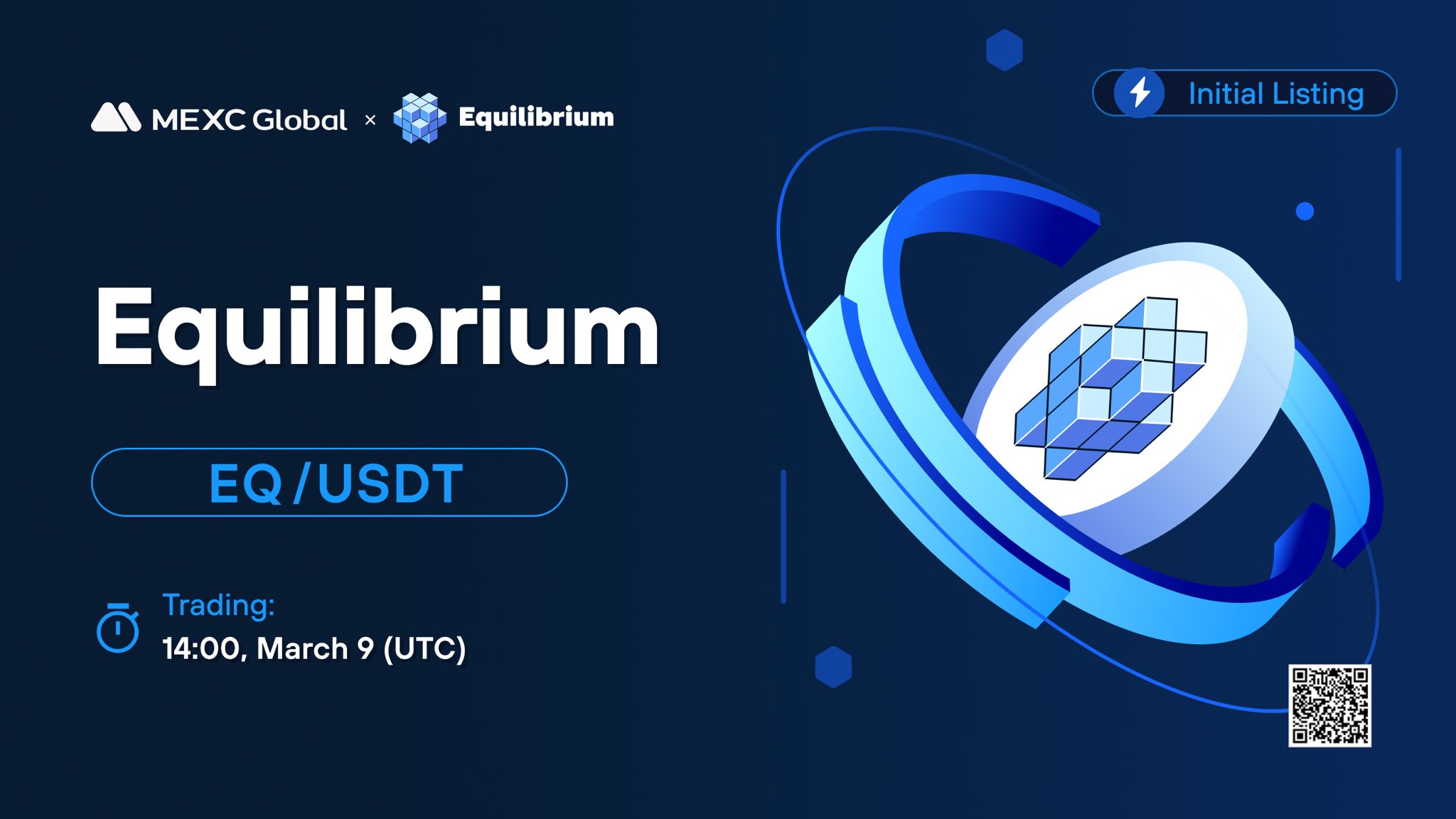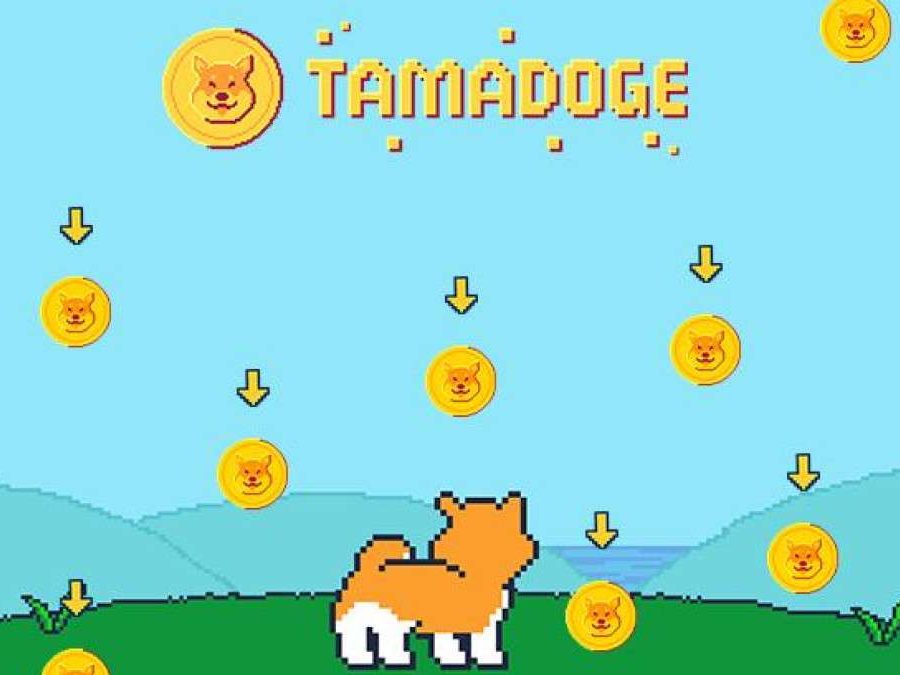
In the rapidly evolving cryptocurrency landscape, Tari emerges as a groundbreaking project that addresses fundamental challenges in blockchain scalability, privacy, and digital asset management.
This comprehensive guide explores Tari’s revolutionary two-layer architecture, its native XTM token, and how this innovative protocol is reshaping the future of decentralized applications. Whether you’re a crypto enthusiast, developer, or investor, understanding Tari’s unique approach to solving blockchain trilemmas will provide valuable insights into next-generation cryptocurrency infrastructure.
Key Takeaways
- Two-Layer Architecture: Tari solves the blockchain trilemma through a sophisticated dual-layer design – Layer 1 (Minotari) focuses on security and global state management, while Layer 2 (Digital Assets Network) provides high-speed, scalable smart contract functionality.
- Enhanced Mimblewimble Protocol: Built on proven privacy technology with significant improvements including TariScript for smart contracts, one-sided payments for practical usability, and stealth addresses for enhanced anonymity.
- Fair Mining Distribution: XTM tokens are distributed through a hybrid proof-of-work system with 50% SHA3x standalone mining and 50% RandomX merge-mining with Monero, ensuring accessibility for individual miners and established mining infrastructure.
- Sustainable Tokenomics: Total supply of 21 billion XTM with 70% allocated to miners and 30% pre-mine. The innovative Turbine Model allows XTM to be burned 1:1 to create XTR tokens for Layer 2 operations, maintaining economic equilibrium across both layers.
- Developer-Centric Design: Comprehensive APIs, detailed RFC documentation, and intuitive development tools democratize blockchain application creation, expanding the pool of developers capable of building on the platform.
- Real-World Applications: Optimized for privacy-focused payments, scalable digital asset ecosystems, gaming integration, and cross-chain asset portability with practical features that address current blockchain limitations.
- Community-Driven Development: Years of transparent, collaborative development guided by extensive RFC documentation ensures all architectural decisions undergo rigorous community review before implementation.
Table of Contents
What is Tari (XTM Coin)?
Tari is a pioneering cryptocurrency project that implements a sophisticated two-layer blockchain architecture designed to overcome the traditional limitations of scalability, security, and decentralization. At its foundation, Tari operates through two distinct yet interconnected layers: the Minotari base layer (Layer 1) secured by proof-of-work consensus, and the Digital Assets Network (DAN) as Layer 2, which provides high-speed, scalable smart contract functionality.
XTM (Minotari) serves as the native cryptocurrency of Tari’s base layer, powering network security through a hybrid mining approach that combines SHA3x standalone mining with RandomX merge-mining alongside Monero. This dual-mining mechanism ensures both accessibility for individual miners and enhanced security through established mining infrastructure. The protocol addresses the distributed system trilemma by strategically separating concerns: Layer 1 prioritizes security and manages global state, while Layer 2 focuses on rapid finalization and highly scalable digital asset operations.
Built on the Mimblewimble protocol with significant enhancements, Tari introduces novel features including TariScript for smart contract functionality, one-sided payments for improved usability, stealth addresses for enhanced privacy, and sophisticated covenant structures. The network’s innovative Turbine Model creates a unique relationship between XTM and XTR (Layer 2 tokens), where XTM can be burned to create XTR at a 1:1 ratio, establishing a sustainable economic model that maintains token equilibrium across both layers.
What is the Difference Between Tari Network and XTM Token
| Aspect | Tari | XTM (Minotari) |
|---|---|---|
| Definition | Complete two-layer blockchain protocol and ecosystem | Native cryptocurrency token of Tari’s Layer 1 |
| Scope | Entire network infrastructure including base layer and DAN | Specific digital asset for transactions and mining rewards |
| Function | Platform for digital asset creation and management | Medium of exchange, mining rewards, and bridge to Layer 2 |
| Layer Operation | Operates across both Layer 1 and Layer 2 | Primarily functions on Layer 1 (Minotari base layer) |
| Use Cases | Smart contracts, digital assets, privacy transactions | Transaction fees, mining rewards, burning to create XTR |
| Governance | Protocol development and network evolution | Token economics and distribution mechanisms |
What Problems Does Tari Crypto Solve?
1. The Blockchain Trilemma Challenge
Tari addresses the fundamental distributed system trilemma that forces blockchain networks to compromise between speed, security, and decentralization. Traditional blockchain architectures struggle to achieve all three simultaneously, leading to networks that are either slow but secure, fast but centralized, or decentralized but inefficient. Tari’s two-layer approach strategically separates these concerns, allowing Layer 1 to maximize security and decentralization while Layer 2 focuses on speed and scalability.
2. Digital Asset Scalability and Utility
The cryptocurrency space has witnessed an explosion in digital asset creation, from NFTs to complex DeFi instruments, but existing platforms suffer from severe scalability limitations and poor user experiences. Tari recognizes that creators and users need blockchain infrastructure that can handle real-world usage patterns without becoming victims of their own success. The Digital Assets Network provides highly scalable digital asset operations while maintaining the security guarantees of the underlying base layer.
3. Privacy and User Experience Gaps
Current blockchain implementations often sacrifice privacy for functionality or create complex user experiences that hinder mainstream adoption. Tari’s integration of Mimblewimble with enhanced features like one-sided payments and stealth addresses provides transaction privacy by default while offering intuitive interfaces that match Web 2.0 user expectations. This approach ensures that privacy isn’t an optional feature but a fundamental characteristic of the network.
4. Developer Accessibility and Tooling
The blockchain development landscape is often dominated by complex, poorly documented systems that create high barriers to entry for developers. Tari places significant emphasis on developer experience through beautiful, clean APIs, comprehensive documentation, and intuitive development tools. This focus aims to democratize digital asset creation and expand the pool of developers capable of building secure, performant blockchain applications.

The Story Behind Tari Network
Tari emerged from a community-driven vision to create the most useful, decentralized platform that empowers anyone to create digitally scarce assets people love. The project represents years of dedicated development by contributors who recognized the fundamental limitations in existing blockchain architectures. Rather than building another incremental improvement, the Tari community set out to solve the core challenges that prevent blockchain technology from achieving mainstream adoption.
The development process has been uniquely transparent and collaborative, with extensive RFC (Request for Comment) documentation guiding every aspect of the protocol’s design. This approach ensures that all architectural decisions undergo rigorous community review and discussion before implementation. The project’s commitment to open-source development and community governance reflects a fundamental belief that truly decentralized systems must be built through collective effort rather than centralized control.
Tari’s technical foundation builds upon the proven security of Mimblewimble while introducing innovative enhancements that expand functionality without compromising core privacy guarantees. The team’s decision to implement a two-layer architecture came from recognizing that no single layer could simultaneously optimize for security, speed, and decentralization. This architectural choice represents a pragmatic approach to blockchain design that prioritizes real-world usability over theoretical elegance.

Key Features of Tari (XTM Token)
1. Advanced Mimblewimble Implementation
Tari builds upon the Mimblewimble protocol’s proven privacy and scalability benefits while introducing significant enhancements that expand functionality. The implementation includes TariScript, which provides limited smart contract capabilities on the base layer, enabling complex transaction structures while maintaining the protocol’s core privacy guarantees. Unlike vanilla Mimblewimble implementations, Tari supports one-sided payments, allowing users to receive funds without interactive participation—a crucial feature for practical adoption.
2. Hybrid Mining Architecture
The network operates through an innovative dual-mining system that splits block rewards equally between SHA3x standalone miners and RandomX merge-miners working alongside Monero. This approach ensures both accessibility for individual miners and enhanced security through established mining infrastructure. The 50/50 distribution is hardcoded into consensus rules, creating a fair and predictable reward structure that encourages broad participation while leveraging existing mining ecosystems.
3. Two-Layer Scalability Solution
Tari’s architecture strategically separates concerns between its base layer, which prioritizes security and manages global state, and the Digital Assets Network, which focuses on rapid finalization and infinite scalability. This separation allows the network to achieve fast, cheap digital asset operations without compromising the security guarantees of the underlying cryptocurrency layer. The DAN utilizes Cerberus consensus, a sharded BFT mechanism designed for scalability as network usage grows.
4. Enhanced Privacy Features
Beyond standard Mimblewimble privacy protections, Tari implements stealth addresses for anonymous fund reception and sophisticated covenant structures for complex transaction chains. These features ensure that privacy isn’t an optional add-on but a fundamental characteristic of network operations. Users benefit from transaction confidentiality by default while retaining the ability to prove transaction details when necessary for compliance or auditing purposes.
5. Developer-Centric Design
Tari prioritizes developer experience through comprehensive APIs, detailed documentation, and intuitive development tools. The platform’s focus on clean, beautiful interfaces extends to its development environment, making blockchain application creation accessible to a broader pool of developers. This emphasis on developer tooling reflects Tari’s commitment to expanding the ecosystem through community participation rather than relying solely on core team development.

Tari Crypto Real-World Use Cases
1. Privacy-Focused Digital Payments
Tari’s Mimblewimble foundation with enhanced features makes it ideal for users requiring transaction privacy without sacrificing usability. The implementation of one-sided payments allows for practical scenarios like tip jars, donation addresses, and merchant payments where interactive participation isn’t feasible. Stealth addresses provide an additional layer of anonymity for users who need to receive funds without revealing their identity to the broader network.
2. Scalable Digital Asset Ecosystems
The Digital Assets Network enables creators to build sophisticated digital asset ecosystems that can scale to support millions of users without performance degradation. This infrastructure supports everything from simple NFT collections to complex gaming economies with dynamic item interactions. The separation between base layer security and DAN scalability ensures that digital asset operations remain fast and affordable regardless of network growth.
3. Gaming and Virtual World Integration
Tari’s architecture particularly excels in gaming applications where rapid state changes and complex asset interactions are common. The network can handle the computational demands of massively multiplayer online games while ensuring that valuable in-game assets maintain their security properties. The ability to create complex covenant structures enables sophisticated gaming mechanics like item crafting, trading restrictions, and achievement systems.
4. Cross-Chain Digital Asset Portability
The platform’s design facilitates digital asset portability across different applications and potentially different blockchain networks. Assets created on Tari maintain their properties and value while being usable across multiple contexts, creating true digital ownership that transcends individual applications or platforms. This interoperability opens new possibilities for creator economies and user engagement models.
XTM Coin Tokenomics and Distribution
Total Supply Structure:
- Maximum Supply: 21 billion XTM tokens
- Emission Period: Approximately 27.8 years with exponential decay
- Tail Emission: 1% annual inflation after initial emission period
- Distribution Model: Block-by-block exponential decay, halving approximately every 3 years
Token Distribution Breakdown:
- 70% (14.7 billion XTM): Mining rewards distributed exclusively to network miners
- 30% (6.3 billion XTM): Pre-mine allocation with the following sub-distribution:
- 12% (2.52 billion XTM): Early participants and supporters
- 9% (1.89 billion XTM): Protocol infrastructure and grants
- 5% (1.05 billion XTM): Community incentive programs
- 4% (0.84 billion XTM): Contributors and developers

Mining Reward Distribution:
- 50%: RandomX merge-mining with Monero
- 50%: SHA3x standalone mining
- Block Time: 2 minutes average
- Reward Schedule: Gradual decline through exponential decay function
Unlock Schedule:
- Community tokens: Monthly unlock over 12 months starting 6 months post-launch
- Protocol infrastructure: 40% immediately available for liquidity, remainder over 4 years
- Contributors: Monthly unlock over 5 years starting 12 months post-launch
- Participants: Monthly unlock over 2 years starting 12 months post-launch
XTM Token Functions and Utility
1. Network Security and Mining Incentives
XTM serves as the primary incentive mechanism for securing the Tari base layer through proof-of-work mining. Miners receive 100% of block rewards and transaction fees, creating a sustainable economic model that ensures long-term network security. The hybrid mining approach allows both individual miners using SHA3x and merge-miners working with Monero’s RandomX algorithm to participate equally in network security provision.
2. Bridge to Layer 2 Ecosystem
The token functions as the exclusive gateway to Tari’s Digital Assets Network through the innovative Turbine Model. Users can burn XTM tokens on Layer 1 to create XTR tokens on Layer 2 at a 1:1 ratio, establishing a one-way bridge that maintains economic equilibrium between layers. This mechanism ensures that Layer 2 activity directly impacts Layer 1 token supply, creating sustainable demand for XTM as the DAN ecosystem grows.
3. Transaction Fee Payment
XTM pays for all base layer transactions, including standard transfers, smart contract executions, and digital asset-related operations. The fee structure incentivizes efficient network usage while providing miners with additional revenue streams beyond block rewards. As network adoption increases, transaction fees become an increasingly important component of miner compensation.
4. Protocol Governance Participation
While not explicitly detailed in current documentation, XTM’s position as the native token suggests future roles in protocol governance decisions. Token holders may participate in voting on network upgrades, parameter adjustments, and development priorities as the network matures toward greater decentralization.
The Future of Tari Crypto
Tari’s roadmap focuses on completing the transition from comprehensive RFC documentation to fully operational mainnet deployment. The immediate priority involves finalizing the Digital Assets Network implementation, which will unlock the platform’s full potential for scalable smart contract execution and digital asset management. Community incentive programs are being developed to encourage early adoption and ecosystem development, ensuring that the network launches with robust activity and engagement.
The long-term vision encompasses expanding the developer ecosystem through enhanced tooling, comprehensive educational resources, and grant programs that support innovative applications. The platform’s emphasis on beautiful, intuitive APIs and development environments aims to attract mainstream developers who might otherwise find blockchain development intimidating or unnecessarily complex.
Technical development continues to focus on optimizing the Cerberus consensus mechanism for the Digital Assets Network, ensuring that the sharded BFT approach can handle real-world usage patterns at scale. The team is also exploring advanced privacy features and cross-chain interoperability solutions that could position Tari as critical infrastructure for the broader cryptocurrency ecosystem.
The community-driven governance model will evolve as the network matures, with token holders gaining increased influence over development priorities and network parameters. This progressive decentralization ensures that Tari remains aligned with its founding principles of community ownership and democratic participation in protocol evolution.

Tari Competitors: XTM vs Other Privacy Coins
Tari operates in a unique position within the cryptocurrency landscape, combining privacy-focused features with scalable digital asset infrastructure. Its primary competitors include other Mimblewimble implementations like Grin and Beam, privacy-focused cryptocurrencies such as Monero and Zcash, and scalable smart contract platforms like Polkadot and Avalanche.
Advantages Over Pure Mimblewimble Implementations:
Tari’s enhanced Mimblewimble protocol offers significant improvements over pure implementations like Grin. While Grin provides excellent privacy and scalability, it lacks practical features like one-sided payments and smart contract functionality. Tari’s TariScript enables complex transaction structures while maintaining privacy guarantees, and its two-layer architecture provides unlimited scalability for digital assets—capabilities that pure Mimblewimble chains cannot match.
Competitive Edge Against Privacy Coins:
Compared to established privacy coins like Monero, Tari offers superior scalability and programmability without sacrificing privacy. While Monero excels at private transactions, its single-layer architecture limits scalability and smart contract capabilities. Tari’s merge-mining compatibility with Monero actually strengthens both networks, allowing miners to secure multiple chains simultaneously while benefiting from increased revenue streams.
Differentiation from Smart Contract Platforms:
Unlike general-purpose smart contract platforms such as Ethereum or Solana, Tari specifically optimizes for digital asset creation and management. Its two-layer architecture solves the trilemma more elegantly than competing solutions by dedicating Layer 1 to security and Layer 2 to scalability. The Cerberus consensus mechanism enables true horizontal scaling, while most competitors rely on various forms of sharding that introduce complexity and potential security trade-offs.

Conclusion
Tari represents a paradigm shift in blockchain architecture, successfully addressing the fundamental trilemma that has limited cryptocurrency adoption through its innovative two-layer design. By combining the proven privacy and security of enhanced Mimblewimble with the infinite scalability of the Digital Assets Network, Tari creates a platform that doesn’t force users to choose between privacy, security, and performance.
The project’s community-driven development approach, comprehensive RFC documentation, and focus on developer experience position it uniquely in the cryptocurrency landscape. With its hybrid mining model ensuring fair distribution and the innovative Turbine Model creating sustainable tokenomics between layers, Tari offers both immediate utility and long-term value proposition.
As the project approaches mainnet launch, early participants have the opportunity to contribute to network security through mining while positioning themselves in an ecosystem designed for the next generation of digital asset applications. For developers, miners, and users seeking a blockchain platform that prioritizes both functionality and principles, Tari presents a compelling alternative to existing solutions.
Join MEXC and Get up to $10,000 Bonus!



